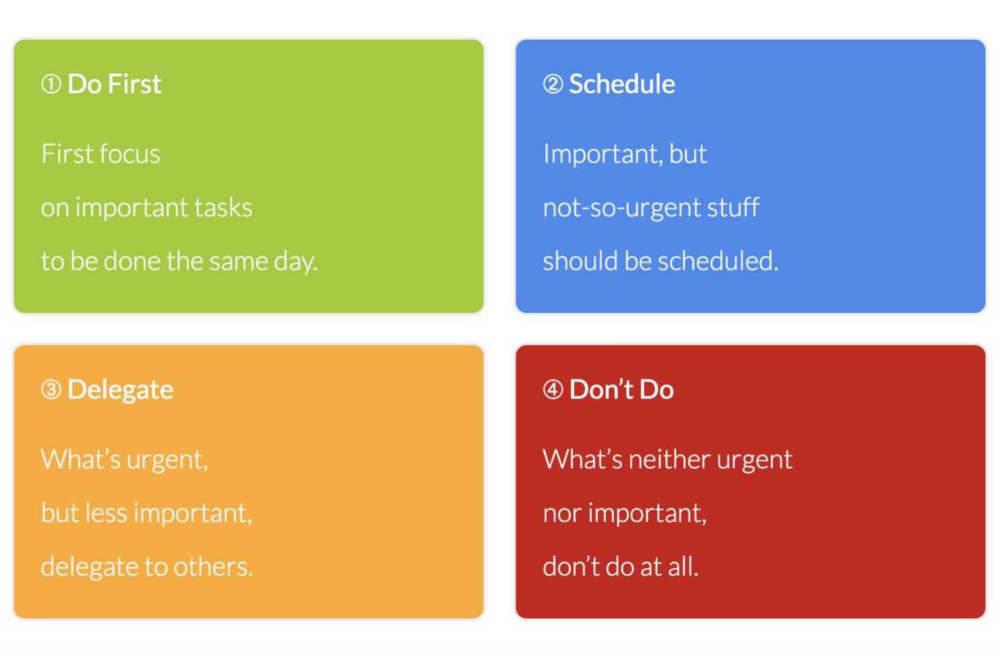14 Tips for Increasing Productivity at Work, Home, and in Life

Here are a few simple techniques to boost your productivity and do more tasks in less time. We’ve divided the advice into three sections: work, home, and life.
What does it mean to be productive?
Every one of us aspires to be more efficient. Being productive is one of those qualities that is universally regarded as positive, similar to being kind, caring, and helpful. The issue is that most people have no idea what productivity is. There are numerous definitions, but we’ll start with Megan Holstein’s, a productivity and self-help author:
To be productive means to be effective at externally rewarding tasks.
To put it another way, you’re productive when you complete a task that isn’t personally enjoy. We may add to Holstein’s definition that productivity also encompasses the concept of accomplishing more things in less time. However, focusing simply on externally rewarding tasks, as Holstein says in her original definition, blinds us to the ultimate goal of productivity.
The goal of being more productive and efficient with your chores is to free up time to accomplish the activities you enjoy. Finally, most productivity suggestions focus on work productivity, which is limited: you can be more productive at home and in your life as a whole.
14 ways to boost your productivity
Work
1. Time your tasks with a time tracker
You can’t enhance something you don’t track. Starting to track your time at work is one of the simplest strategies to become more productive. You’ll be able to alter your priorities and determine if some things really belong on your to-do list once you see where your time goes every day and which chores demand the most out of your workday. Toggl Track is an excellent tool for keeping track of how long it takes you to perform certain chores.
2. Have a to-do list
We often find it difficult to be productive simply because we have no notion what chores are on our to-do list. A basic worklist can be a game-changer in terms of recovering control. If you want to go old school, use a basic sheet of paper and cross off the chores when they are accomplished. You can also go digital and save a tree. A Task feature is included with the Toggl Track Starter plan, which acts as a to-do list.
3. Prioritize using the Eisenhower Matrix
The Eisenhower Matrix may be the tool for you if you’re seeking a quick approach to manage a large task. Dwight D. Eisenhower, the former president of the United States, devised his matrix, sometimes known as the Urgent-Important matrix, to help him make difficult decisions.
The Eisenhower Matrix pushes you to categorize all of your duties into one of four categories based on their urgency and relevance. You can do first, schedule, delegate, or eliminate the work in question depending on which bucket it belongs in. It’s a very simple strategy that still works today.
4. Break down big tasks into smaller ones
Take one bite at a time when eating an elephant, as the old proverb goes. Even the most difficult activities can appear simple and straightforward when broken down into smaller chunks. Breaking up your work has a lot of advantages. You get feedback faster, you don’t postpone as much, and this manner of working is simply better for our rather weak memory ability, according to one doctor.
5. Eliminate unnecessary communication
For those of us who work remotely, being online and responsive all of the time might be a way to show how hard we’re working. Spending too much time in Slack, on the other hand, can have a negative impact on your productivity. Push alerts, even when ignored, are just as distracting for productivity as phone calls or messages, according to a 2015 study. Most modern communication apps allow you to disable notifications, which you should do if you want to focus on your work rather than sending messages all day.
Home
6. End your day even when you feel like you could continue
Writer Ernest Hemmingway has a terrific productivity tip: when things are going well, stop working for the day. That way, your mind will work on the assignment subconsciously until you resume it the next day. If you struggle towards the end of the day, you can find yourself thinking about work, making it tough to get back on track.
7. Don’t multitask
Many of us, even as adults, have a tremendous admiration for our multitasking mothers, who often juggled three or four jobs at once. Anyone who can make your lunch, assist with schoolwork, get dressed for work, and do all of this while on the phone with a client deserves our admiration. Splitting your focus between numerous goals, on the other hand, appears to save time. The claim that multitasking is a myth is backed up by reliable research.
While we may believe we are (successfully) doing two things at once, we are actually rapidly moving between tasks. When you have two goals in mind at the same time, you aren’t giving each one your entire, undivided attention and focus. As a result, you’re not working to your maximum potential. We often have the option of not multitasking, unlike many of our mothers. So, instead of multitasking, concentrate on only one goal and one task at a time, and accomplish it very well.
8. Find your peak hours
We all have the same 24 hours in the day but for better or for worse, we’re not all at our most productive at the same time. Our days are divided into blocks of time, and every 90 minutes or so, we reach a peak of productivity known as the ultradian cycle. These are your most productive moments, and this is when you should focus on the most important tasks that require your entire concentration. You can finish your less demanding tasks when you’re not feeling particularly productive.
Of course, you’ll need to do some research and log your moods and habits to find your ultradian cycles (it’s different for everyone). But once you do, you’ll know exactly when you’re at your most productive.
9. Exercise, even if it’s just a short walk
You’ll hear that exercising has several health benefits no matter where you go. Productivity is one of the advantages. Even something as simple as a brief stroll will get your blood circulating and attentiveness up, allowing you to be more productive. You don’t even need to go to the gym; a quick walk around your house or building would suffice. Alternatively, there are several home fitness routines that can be done indoors with little or no equipment.
Life
10. Ask for help when you feel stuck
When things aren’t going as planned, you have two options. You can either fight it out on your own or seek assistance. While pride may get in the way, keep in mind that asking for help from someone more experienced is one of the easiest ways to be more productive and save a lot of time. It doesn’t have to be someone more knowledgeable or experienced–sometimes just getting a second opinion can make all the difference.
11. Take breaks
It’s usually a good idea to take a breather when you’re stuck. Even if you’re not stuck and excelling at a certain work, you’ll need to take a break to recharge. The Pomodoro approach, which divides your work into 25-minute chunks and 5-minute intervals, is a fantastic method to systemize this. Toggl Track has a built-in feature that allows you to use the Pomodoro technique.
12. Wake up early
There is research to support the idea that getting up early can be beneficial in a variety of ways. People who get up early reach their full state of wakefulness sooner and can hit the ground running. Furthermore, according to the survey results, early risers tend to get better grades, get into better universities, and generally fare better in their careers, which can have a positive impact on your personal life.
13. Avoid social media
According to a recent report from marketing research firm GlobalWebIndex, people spend 2 hours and 24 minutes per day on social media.
So, if you’re wondering where all your time has gone and why you can’t seem to get anything done, it could be the time you spend every day on Twitter, Instagram, or Facebook. Make sure you monitor your social media usage – it’s actually quite simple to do on your phone. Toggl Track can be used to track not only how much time you spend at work, but also how much time you spend on social media.
14. Identify the tasks you spend the most time on
You must spend your time wisely if you want to increase your productivity. It’s possible that you’re wasting a lot of time on tasks that aren’t important to you. The best way to figure out which tasks are consuming your time is to start tracking them, either manually or with an app like Toggl Track. When you start looking at your time distribution honestly, you’ll be able to see if the majority of your time is spent on unimportant tasks or tasks that don’t really contribute to your overall goals.
Is there anything else you can do to become more productive at work, at home, or in life in general? Please let us know if we missed anything in the comments!
Related Article:
https://toggl.com/blog/how-to-be-more-productive




